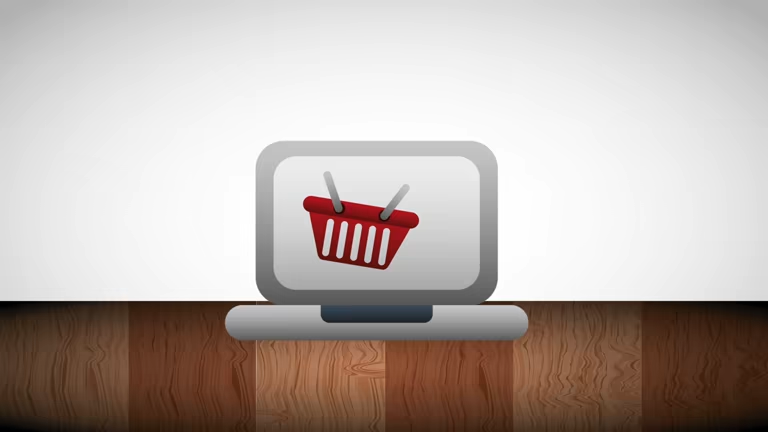The retail industry has been evolving rapidly, with sustainability becoming one of the biggest driving forces of change. In this context, Gray Poplar online retail has emerged as a modern e-commerce model that emphasizes eco-conscious shopping while still offering digital convenience. This approach is reshaping how businesses operate and how consumers engage with brands, proving that profitability and responsibility can go hand in hand.
What Is Gray Poplar Online Retail?
The concept of Gray Poplar online retail takes inspiration from the gray poplar tree, known for resilience, adaptability, and environmental benefits. Just as the tree supports ecosystems, this retail strategy integrates sustainability into digital shopping experiences.
Instead of focusing solely on speed and low prices, Gray Poplar online retail emphasizes:
- Eco-friendly product sourcing.
- Low-impact packaging and shipping solutions.
- Transparent communication about sustainability practices.
- The use of advanced technologies to optimize resources.
This shift allows businesses to appeal to customers who prioritize responsible shopping habits.
Why Consumers Are Moving Toward Sustainable Online Retail
Modern consumers, especially younger generations, want brands that align with their values. They are no longer satisfied with flashy advertisements—they demand authenticity. Gray Poplar online retail taps into this trend by providing:
- Clear information on how products are made.
- Visible efforts to reduce carbon footprints.
- Packaging designed to be recyclable or biodegradable.
- A commitment to ethical labor and supply chains.
This customer-driven demand has positioned sustainability as a competitive advantage, not just an optional extra.
Core Benefits of Gray Poplar Online Retail
Businesses adopting this model gain multiple long-term advantages.
Strengthening Customer Loyalty
People are more likely to return to brands that demonstrate care for the planet. Gray Poplar online retail fosters stronger emotional connections between companies and customers.
Standing Out in a Crowded Market
With countless e-commerce stores competing for attention, sustainability helps retailers carve out a unique identity.
Operational Efficiency
Smart logistics, inventory management, and greener shipping methods reduce unnecessary waste and costs.
Regulatory Readiness
Governments worldwide are tightening environmental laws. Companies using Gray Poplar online retail strategies are better prepared for compliance.
Elements That Define Gray Poplar Online Retail
To succeed in this retail approach, businesses must embed sustainability into every stage of their operations.
- Product Choice: Prioritizing eco-friendly, recycled, and responsibly sourced items.
- Packaging: Using minimal, compostable, or reusable packaging.
- Transparency: Communicating supply chain and production details to consumers.
- Technology: Employing automation, blockchain, and data tools to optimize efficiency.
Together, these elements create a shopping experience that is ethical, modern, and customer-focused.
Consumer Expectations in Gray Poplar Online Retail
Customers shopping through eco-conscious retailers have higher expectations than traditional online shoppers. They expect:
- Sincerity in sustainability claims with no misleading “greenwashing.”
- Fast but eco-responsible delivery, balancing convenience with environmental impact.
- Engagement through storytelling, where the brand explains its eco-journey.
- Community-driven values, such as donations to reforestation or climate initiatives.
Meeting these expectations helps brands build lasting trust.
Technology Powering Gray Poplar Online Retail
The success of sustainable e-commerce heavily relies on digital innovations. Key technologies include:
- Artificial Intelligence: To forecast demand and minimize excess production.
- Blockchain: To verify eco-friendly supply chains and product authenticity.
- Automation: Streamlining warehouse operations while cutting energy costs.
- Augmented Reality (AR): Helping consumers visualize products virtually, reducing returns and waste.
By combining green values with smart tech, Gray Poplar online retail ensures sustainability remains practical and scalable.
Challenges in Implementing Gray Poplar Online Retail
Like all business models, this approach faces certain obstacles:
- Higher upfront investment in sustainable packaging and logistics.
- Difficulty competing with retail giants offering ultra-fast but less eco-friendly delivery.
- Customer skepticism when eco-claims aren’t backed with data.
- Balancing affordability with environmental goals.
Overcoming these hurdles requires creativity, collaboration, and transparency.
How Businesses Can Succeed with Gray Poplar Online Retail
For retailers ready to embrace this model, a few strategies can ensure long-term success:
- Adopt Circular Practices: Sell products designed to be reused, repaired, or recycled.
- Green Logistics Partnerships: Work with carbon-neutral couriers and delivery systems.
- Transparency Campaigns: Share measurable eco-goals with customers.
- Digital Engagement: Use blogs, videos, and social content to showcase eco-stories.
- Sustainability Reports: Publish progress updates to build consumer confidence.
These methods allow retailers to integrate sustainability deeply into their business culture.
Case Studies of Gray Poplar Online Retail
Many businesses have already embraced the core principles of
- Fashion brands offering biodegradable fabrics and recycled clothing.
- Homeware companies using reclaimed wood and eco-certified materials.
- Zero-waste online markets selling refillable or packaging-free essentials.
These examples highlight the adaptability of across industries.
The Future of Gray Poplar Online Retail
Looking ahead, sustainability will only grow in importance. Future trends include:
- Personalized eco-shopping assistants powered by AI.
- Subscription services that minimize packaging and encourage loyalty.
- More local micro-warehouses to reduce shipping distances.
- Government incentives rewarding eco-conscious e-commerce brands.
Ultimately,is not a passing trend—it is becoming the standard.
Conclusion
represents the next step in e-commerce evolution, blending sustainability with convenience. By focusing on transparency, consumer values, and technology, this approach builds trust, reduces waste, and secures long-term growth.
For businesses, adopting this model is not just about staying relevant—it’s about leading the future of online shopping in a responsible way.


